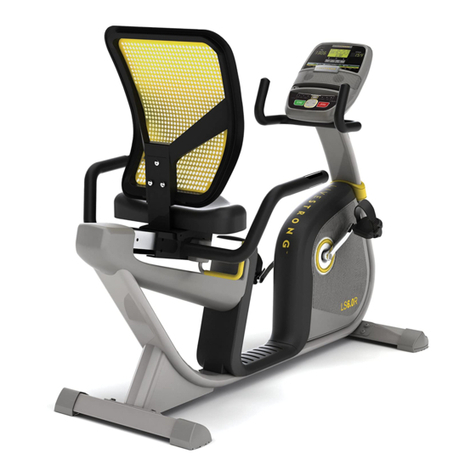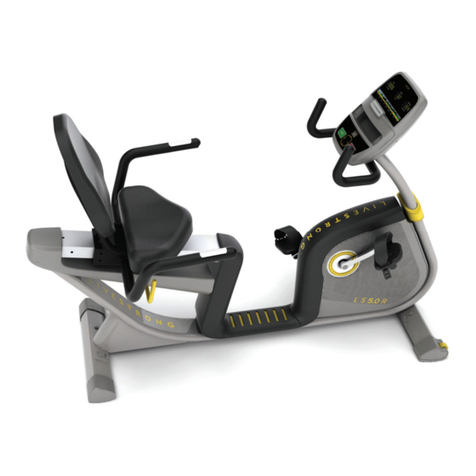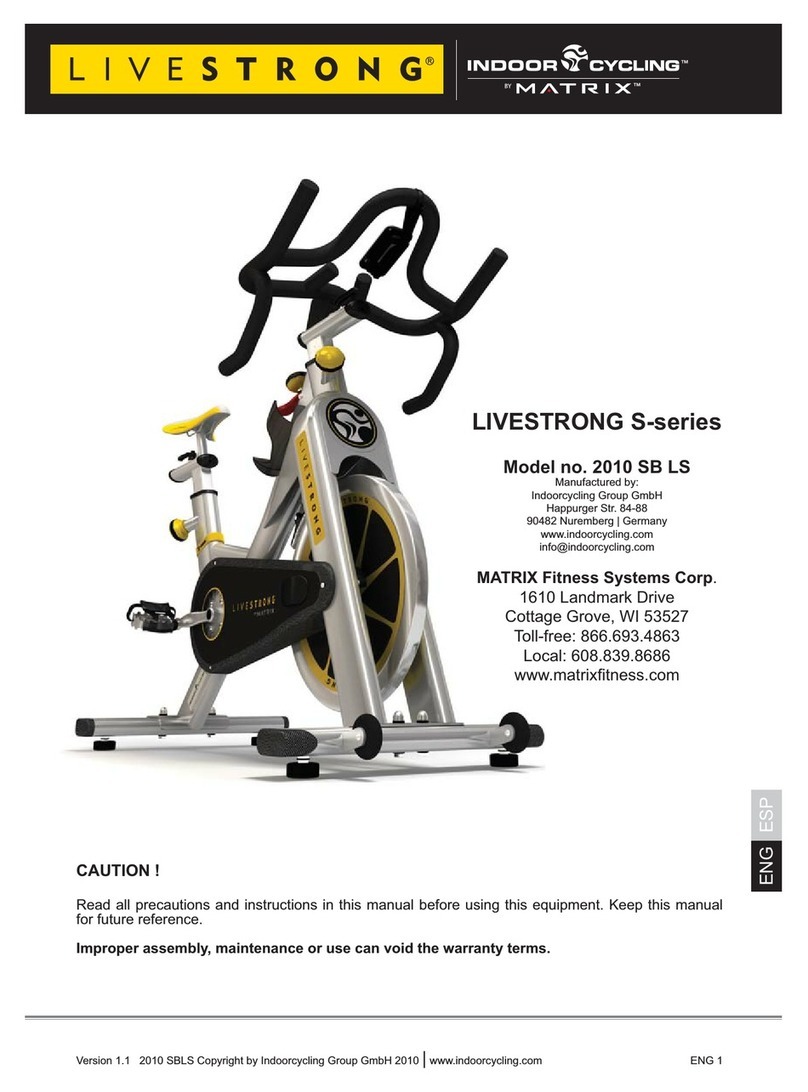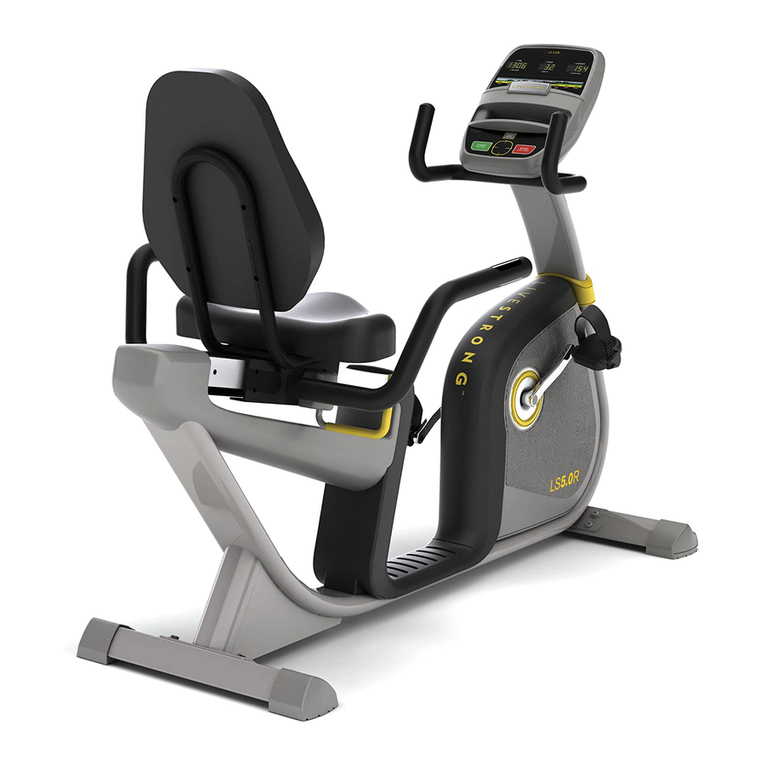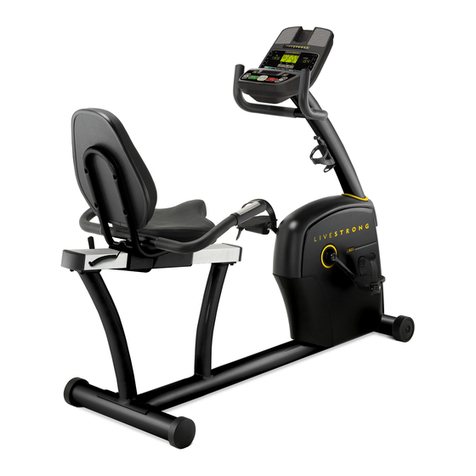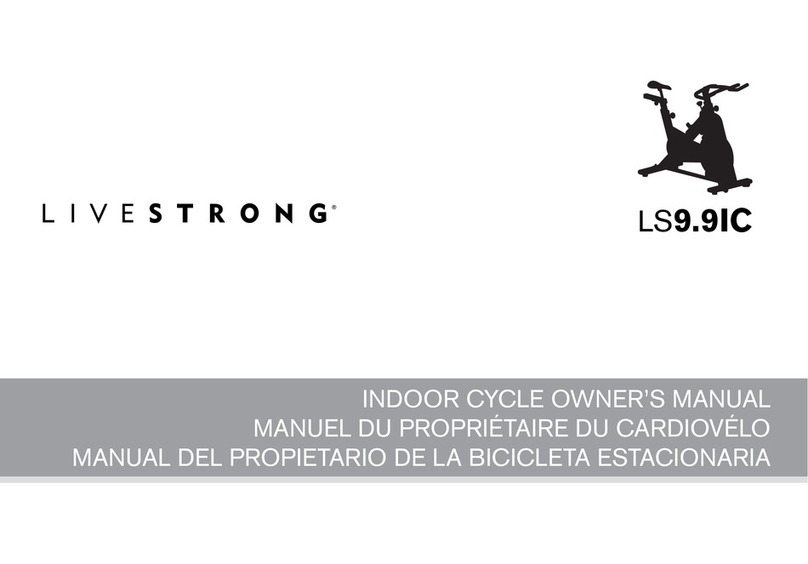4
READ AND SAVE ALL INSTRUCTIONS BEFORE ASSEMBLING OR USING THIS INDOOR
CYCLE. IT IS STRONGLY RECOMMENDED TO TAKE THE FOLLOWING SAFETY
INSTRUCTIONS.
• CAUTION: If you experience chest pains, nausea, dizziness or shortness of breath, stop exercising immediately and consult your
physician before continuing.
• Use this cycle for its intended purpose as described in this manual. Do not use attachments that have not been recommended by
the manufacturer.
• Never operate the cycle if it is not working properly, or if it has been damaged. Contact LIVESTRONG Fitness or the authorized
dealers for examination and repair.
• Do not use the cycle without proper footwear. NEVER operate the cycle with bare feet.
• Do not wear any clothing that might catch on any moving parts of this cycle.
• Keep hands and feet clear at all times from moving parts to avoid injury. Never turn the pedal cranks by hand.
• Do not dismount the cycle until the pedals are at a complete STOP.
• Do not attempt to ride the cycle in a standing position at high RPMs until you have practiced at slower speeds.
• Do not insert any object, hands or feet into any openings, or expose hands, arms or feet to the drive mechanism or other potentially
moving part of the cycle.
• Do not use any equipment that is damaged or has worn or broken parts. Use only replacement parts supplied by LIVESTRONG
Fitness or the authorized dealers.
• Do not operate where aerosol (spray) products are being used or when oxygen is being administered.
• Close supervision is necessary when used near children, invalids or disabled people.
• When the cycle is in use, young children and pets should be kept at least 3 meters / 10 feet away.
• After exercising, push down on the tension knob or turn the tension knob in a clockwise direction to slow the flywheel down and
decrease the potential for injury.
• Ensure that adjustment levelers (saddle and handlebar height, saddle and handlebar fore-and-aft) are properly secured and do not
interfere with range of motion during exercise.
• It is the sole responsibility of the owner to ensure that all users of the indoor cycle are informed of all warnings and precautions.
• Keep the indoor cycle indoors, away from moisture and dust. Do not place the indoor cycle in a garage, covered patio or near
water.
• Place the indoor cycle on a level surface. To protect the floor or carpet from damage, place a mat beneath the indoor cycle.
• The indoor cycle does not have a independently moving flywheel; the pedals will continue to move together with the flywheel until
the flywheel stops.
WARNING
